What to Store Feed in Thats Waterproof
Get the help you need to plan a productive year on the homestead! Grab your FREE Homestead Project Planner HERE. Thanks for visiting!
If you are struggling to find a way to store feed for your animals that will keep it free of pests and bugs and moisture free this might be the solution you are looking for. I am going to show you the livestock feed storage containers that I have been using for years and absolutely love them. A great option to consider for food storage for how to raise dairy goats.
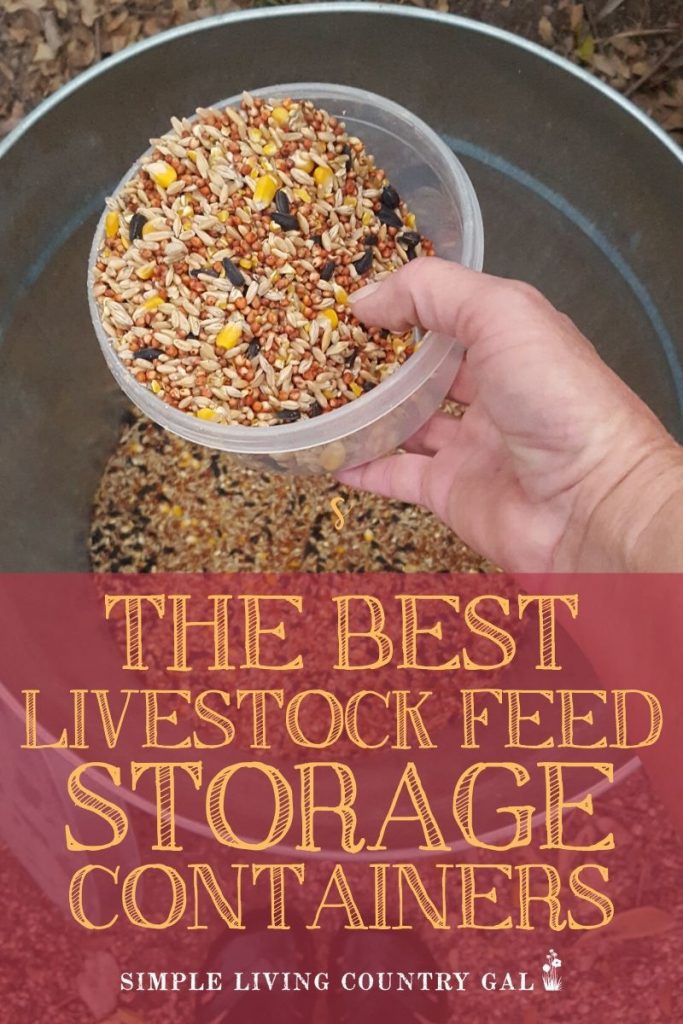
One of the joys of having a homestead is the mix of animals you can raise together. Many hobby farms and family homesteads tend to resemble more of a zoo, which I think is one of the perks of being a homesteader. It's not uncommon to see goats and cows grazing in a pasture with llamas and chickens alongside them. And sure those animals can all chow down on the same pasture grass and browse but when it comes to individual feed, this is a whole other story.
Each livestock animal has their own nutritional needs and that means there most likely is a feed/grain mixture made specifically for them. One that will give the best nutritional value that meets that animal's specific requirements. This is usually a grain mix of some sort not to mention breed-specific supplements and even treats. This means the more animals you raise the more different types of feed you will need to keep on hand and store in your barn or other livestock building.
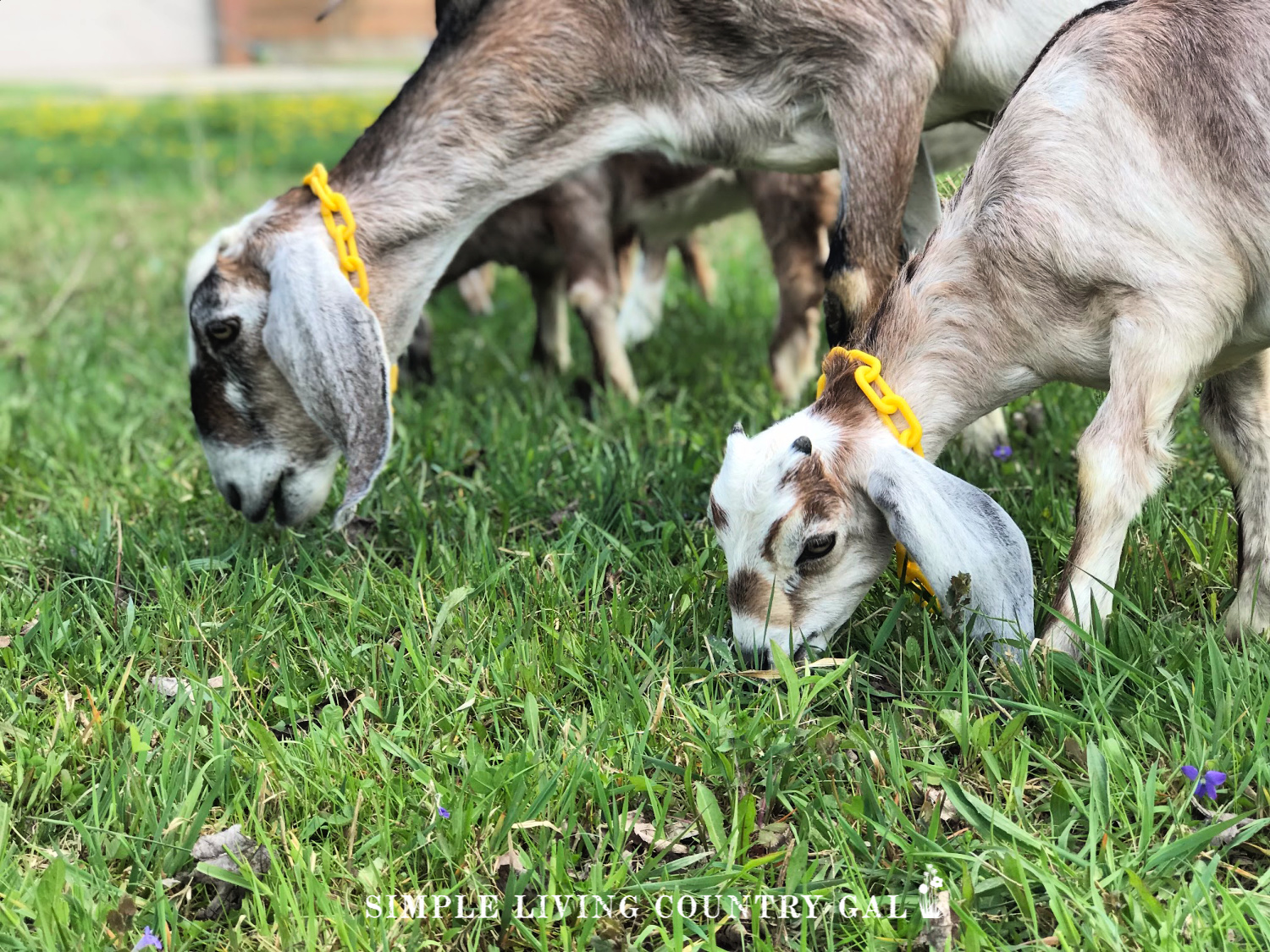
This was something, I found out rather quickly, that needed to be done correctly from the beginning. There needs to be a way to store all the different feeds securely that would not only ensure the food is kept fresh but will also keep the rodents and bugs out.
Another lesson I learned as well. You cannot give spoiled food (even slightly) to your animals. A good rule of thumb to have is. If you won't eat it, don't make them eat it. If it's going to make you sick, odds are it will make your livestock sick as well.
How do you know if livestock feed is spoiled?
More often than not you can use your nose to tell. Sour-smelling feed is a clue that something is off. If you smell must or mold that is another telltale sign. Also, look for mold or mildew inside of the bag or container.
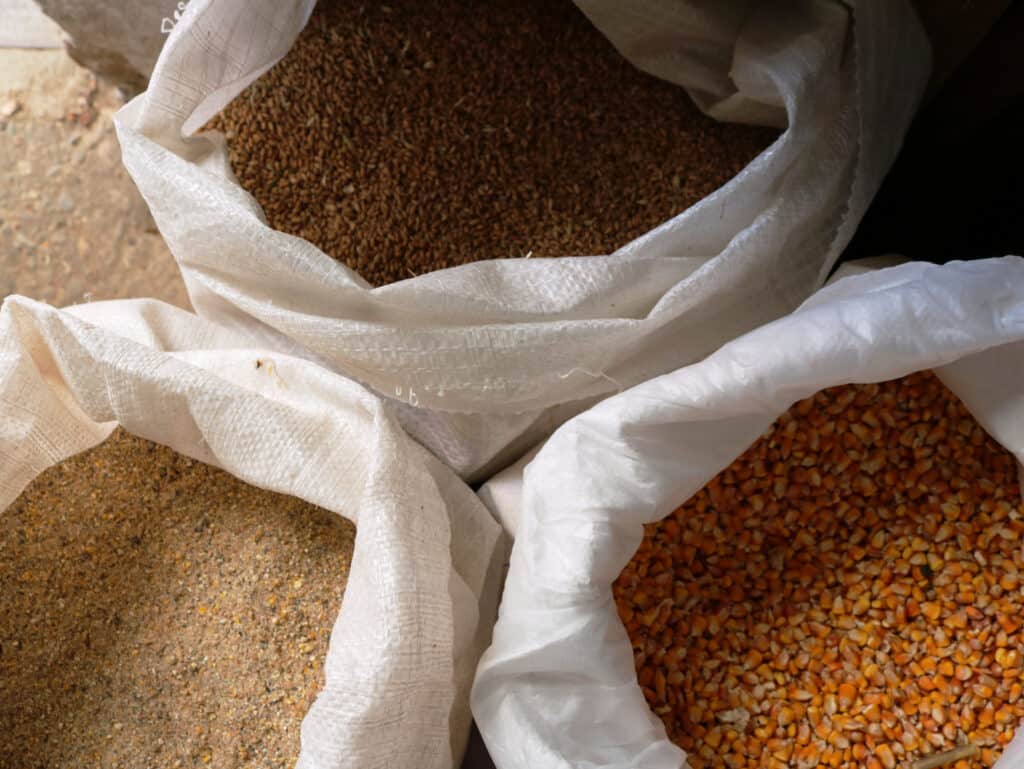
You know that old saying, for every mouse you see there are 100 or more hiding? Okay, maybe that is not a saying, but trust me it's (almost) true. How do I know? I actually experienced this firsthand and it took just one bag of chicken feed left on my barn floor to find out. I like to stock up on purchases both for our family and our animals. The fewer times I go into a store the less money I spend. For that reason, it was not uncommon to find 4-5 bags of feed stacked in our barn.
One day as we worked our way down to the bottom of our chicken feed stack we realized one of the bags had been chewed open and quite a bit was missing. I can only imagine how many mice we fed with that one bag. It took our two cats and weeks of trapping to get our barn free of rodents.
After finally getting that mistake corrected, I decided it was time to find a way to house all the different feeds I needed to store in a safe and secure way.
Below is a list of all the storage I have tried myself. Some will work better than others and I tried to give my own rating system for each. This is meant to help you better decide which will work best for you.
My top 3 criterion for finding the best feed containers is:
- Their ability to keep pests out.
- How well they keep the food fresh.
- How easily I can move them around even when they are full.
We do not have issues with ants where we live so I do not know specifically how well each of these options works to deter them specifically. If you live in an ant area I would love to know what containers you like and why. Just leave a comment below so I can add your information to this list.
The Best Livestock Feed Storage Containers
As I mentioned before this is a short list of methods I have tried out on our home homestead. I wanted to be sure I only reviewed options I used so I can give you a more honest viewpoint of each.
Feed Option #1. Metal Drum Barrels
This was the first container option I used to store our livestock feed and for a while, it worked great. One large barrel can hold 3-4 bags of 50lb chicken feed or 100lbs of pig feed. You can use these barrels to hold several bags for full storage or dump full bags inside and feed directly from there using a large scoop. Steel barrel drums work great because they do hold quite a bit. The one downfall is that once you fill them, you seriously cannot move them.
Since the lids do not lock down securely on most metal drums, I find that placing a brick on the top will usually keep the mice out.
SLCG PRO TIP: Never underestimate a mouse. They can fit into the smallest of holes bringing their entire family along with them. This means you will want to be thorough when you are securing your lids so, hopefully, you will never have to deal with these pests.
Metal Drum Barrels Review
Pro: Metal barrels are incredibly durable. Once you buy one you can expect it to last. You can usually find these for sale on Craiglist making it a more affordable option to try out.
Cons: These barrels take up quite a bit of room and are not easy to move even when they are empty. Another con is it can be incredibly difficult to get that last 50lb bag of feed out of a large metal drum. This was something that was pretty much impossible for me given my shortness.
Bottom Line: A great way to store bags of feed in a very secure way. Barrels are also perfect for 100-pound bags of feed that you leave in and use until they are gone.
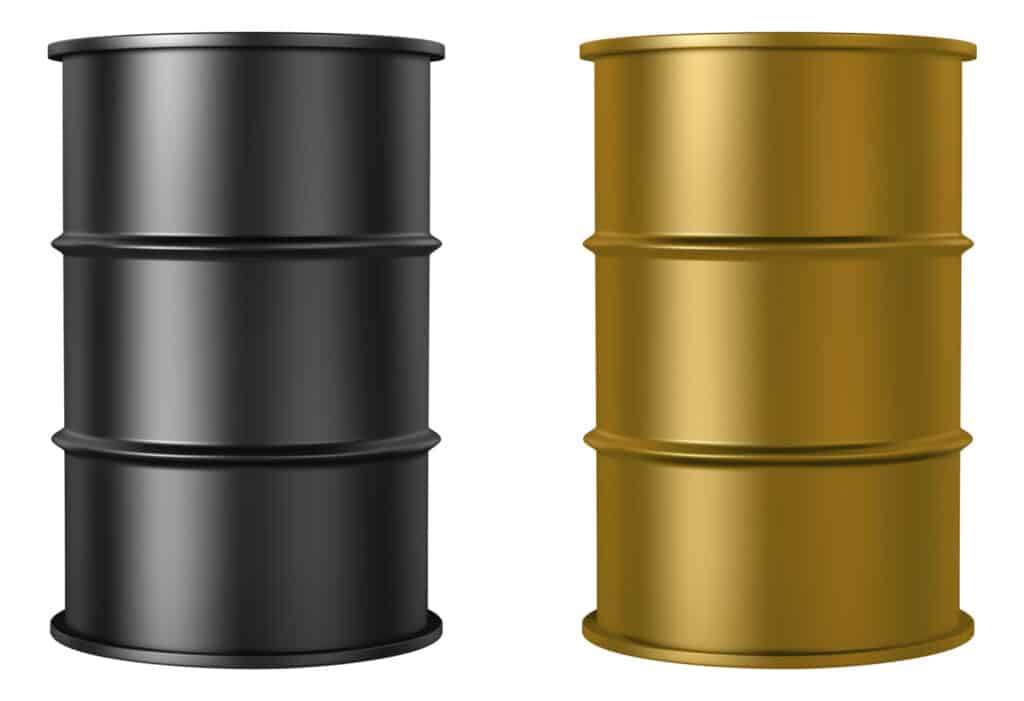
Feed Option #2. Plastic Totes
I really love using plastic totes of all sizes to store our livestock feed and herbs. I still use smaller totes now as they work great for the different ingredients we use to mix our own feed. They are pretty inexpensive and can be stacked up taking up much less room in your storage area. This is especially helpful if you have a pretty small feed room as we did.
Since most plastic totes have handholds on either side, you can more easily move them even when completely full of feed.
If you are stacking totes you will need to label them clearly on the side so it is easier to find the feed or supplements you need without having to dive into each.
Since we had multiple totes for each breed of animal I liked to keep things stacked together. My feed room resembled a Walmart with a section for ducks, one for chickens, pigs, goats, and even our dog and cat. I find that when you bundle totes together it makes your feeding system much more efficient.
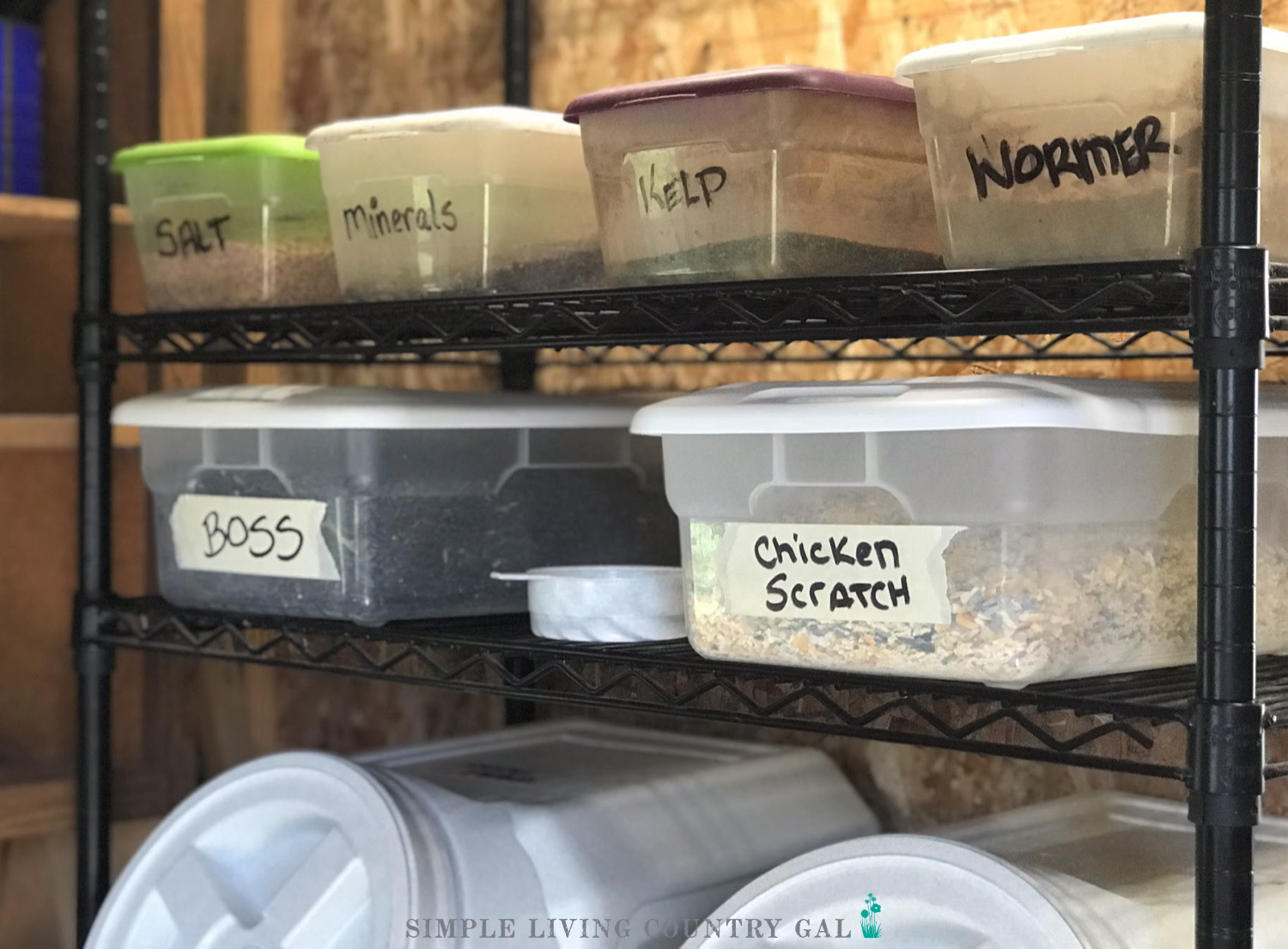
Small totes that are shoebox-sized, also are a great way to store minerals, herbs, treats, and other supplements.
READ: FEEDING KELP TO YOUR ANIMALS
Plastic Totes Review
Pro: Easy to move even when full and if you purchase like brand and sizes, they can stack up nicely even when full. As long as the lids fit securely they will keep mice out and feed fresh.
Cons: Normal-sized totes cannot hold a full bag of feed. This means you will need a second tote to hold the rest of the feed or you will want to find another way to store partial bags until you need them. They also do not last forever especially if you live in an area where the winters get really cold.
Bottom Line: Totes are very inexpensive and work great in a small livestock shelter since they can stack easily taking up much less room.
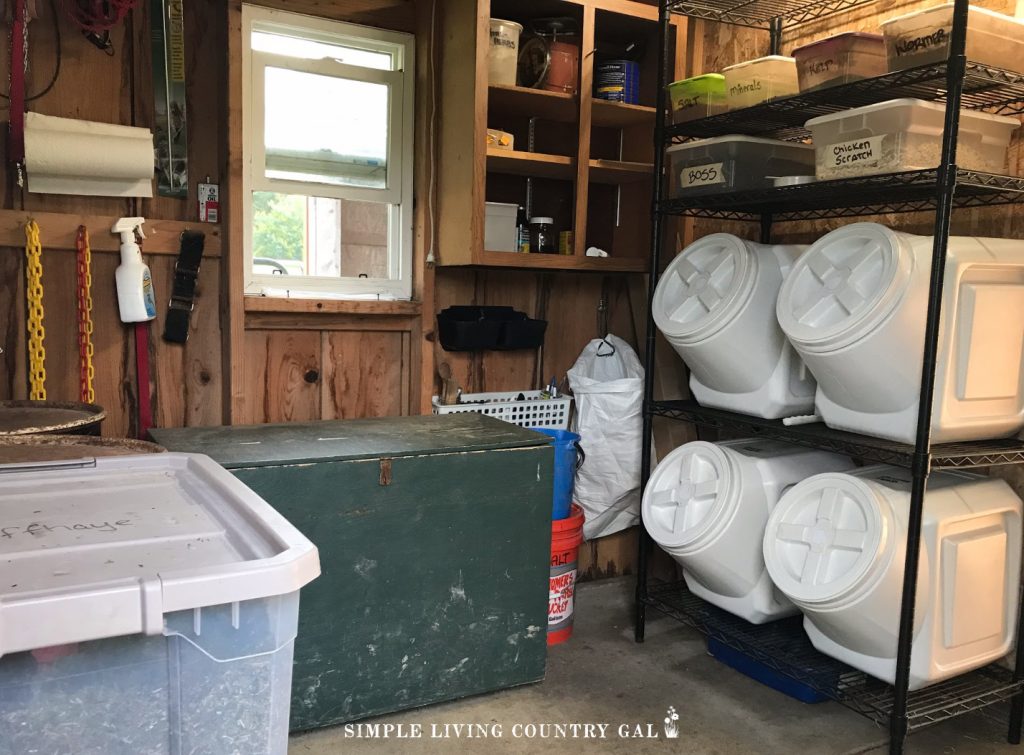
Feed Option #3. Tack Box
Tack boxes work great to hold small bags of feed or partial bags if you are using totes for your main storage. A tack box is simply a plastic or wooden box with a hinged lid. These boxes are quite common in barns and can hold up to a few hundred pounds of feed at one time.
We have one in our feed room that we use to store partial bags and miscellaneous items. Since we live in a damp area we have our tack box on wood board to hold it up off the ground just a bit. This way if we have any flooding in our feed room the box and feed inside will remain dry.
You can purchase tack boxes or build your own as my dad did for us. Just remember if you choose to make your own box, you will want to have sturdy handles that will allow you to move it around more easily. I love our rope handles since this means I am able to drag a full tack box away from the wall in order to clean. Frequent cleaning is a major requirement if you want a mouse-free barn.
Tack Box Review
Pro: Tack boxes work great to hold multiple bags of food and supplies. It can also double as a bench making it so easy to mix feed on.
Con: It can be hard to keep the contents neat and organized inside. Spills tend to happen when you have different bags of feed opened for mixing. This puts another cleaning task on your homesteading chores list which is probably already longer than your arm.
Bottom Line: Tax boxes are a nice way to store food and give you a work table at the same time. This is great for smaller hobby farms where room is a bit short.
Feed Option #4. Plastic Feed Storage Containers
A few years ago I decided to invest in livestock feed storage containers from Vittles Vault that are specifically made for storing feed. These stacking containers resemble bins and have round lids that you can easily screw on and off keeping mice completely out. Inside is a scoop and each container will hold 50 pounds of feed. This really surprised me since the bins look relatively small.
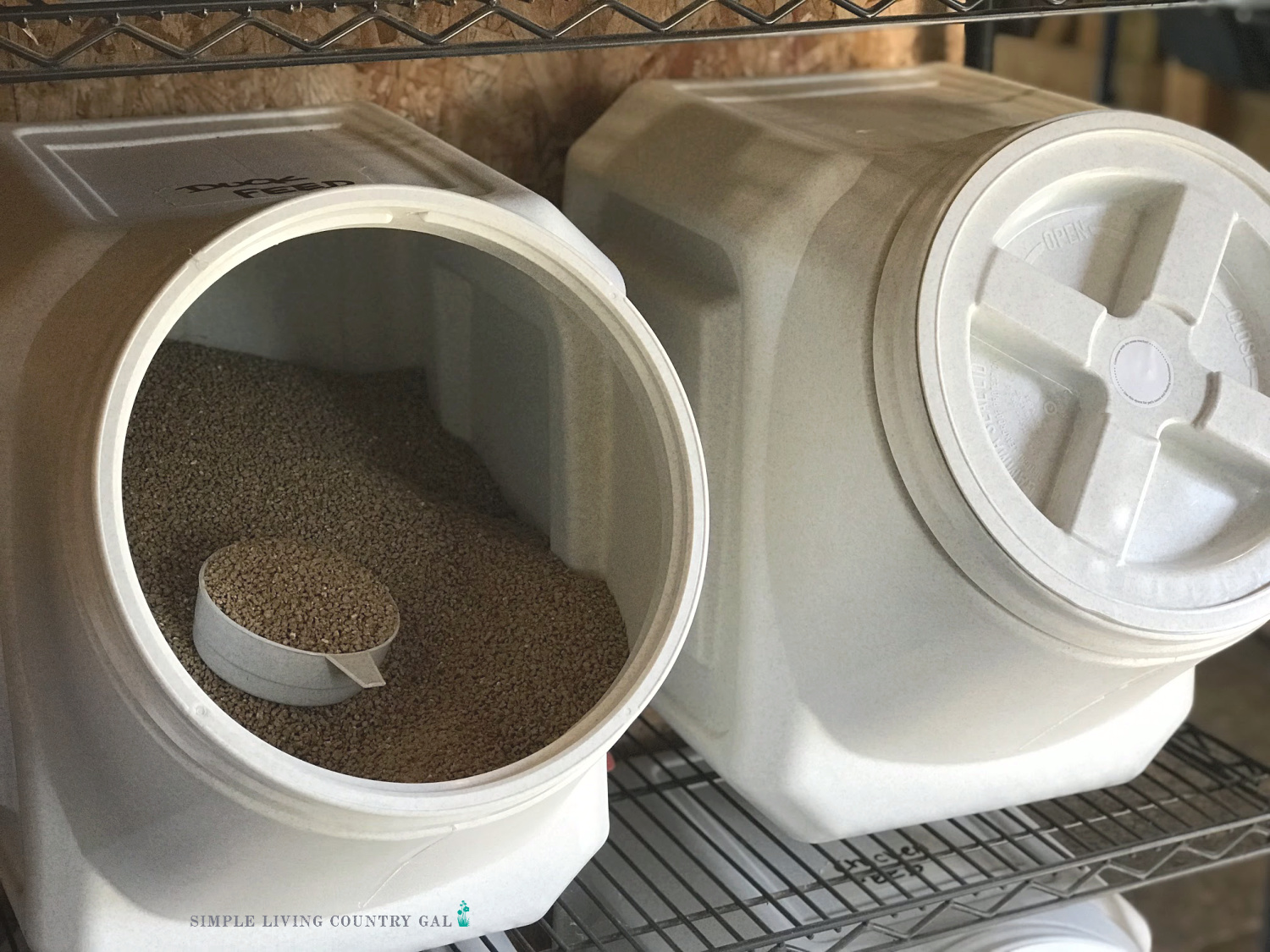
There are handholds on the sides of the plastic bins that make them easy to move even when full. They also have an indent on the top and bottom that allows you to stack them keeping them in place a bit so they do not topple even if bumped into.
They are completely rodent-proof, from my own experience, because they are made of very thick plastic and have tight lids with a rubber ring seal allowing you to keep it securely in place.
We have used these containers for several years now and they are my favorite way to store feed both in our barn and now in our home as well. I have never had a bug or pest invade the contents inside making this an investment that was worth the money.
Plastic Feed Storage Containers Review
Pros: Can hold quite a bit of feed and are easy to move. They stack nicely and work great on wire shelving. Come with a small scoop for convenient mixing and portion control.
Cons: They are somewhat expensive and for that reason may not be the best option for a newer homestead.
Bottom Line: If you can afford the investment these feed storage containers are my top pick. Their size is the perfect chicken feed bin holding a 50-pound bag nicely. They also come in different sizes so you can mix and match them based on your needs.
Feed Option #5. Trash Cans
If new livestock feed storage containers are not in the budget this year yet you are still in need of a feed storage option, then galvanized garbage/trash cans might be what you need. A super simple and affordable approach that will help to keep mice and rats out of your feed. Again, we used this storage option for quite a while and found it to work surprisingly well in our barn and feed room.
Pros: They hold quite a bit and are relatively easy to use. They are somewhat easy to move especially if they have side handles. Easy to reach all the feed even at the very bottom.
Cons: Most trash cans have lids that are not able to close and lock so you will want to anchor them down with by setting a heavy brick on top or using rubber bungee chords to lock them into place.
Bottom Line: A great option if you are just starting out and want a secure way to store your feed that will keep large rodents from chewing through the container.
Bonus Livestock Feed Storage Supplies
No matter which option you choose you will want a way to move things around without risking injury to your back. I like to use flatbed rollers for this. Set them under your can or barrel before you fill it. Not only will these cards keep your storage container up off the ground you will be able to roll them around as needed.
Another tool to have is a good-quality feed scoop. We like to have one in each storage bin so we can easily scoop out what we need without making a mess.
Having a heavy-duty shelving unit is important so it can hold up to the weight of your feed containers. You can adjust the shelves so you can store your containers on them no matter what size they are.
A dry-erase board is good to have for keeping notes for feed rations and recipes.
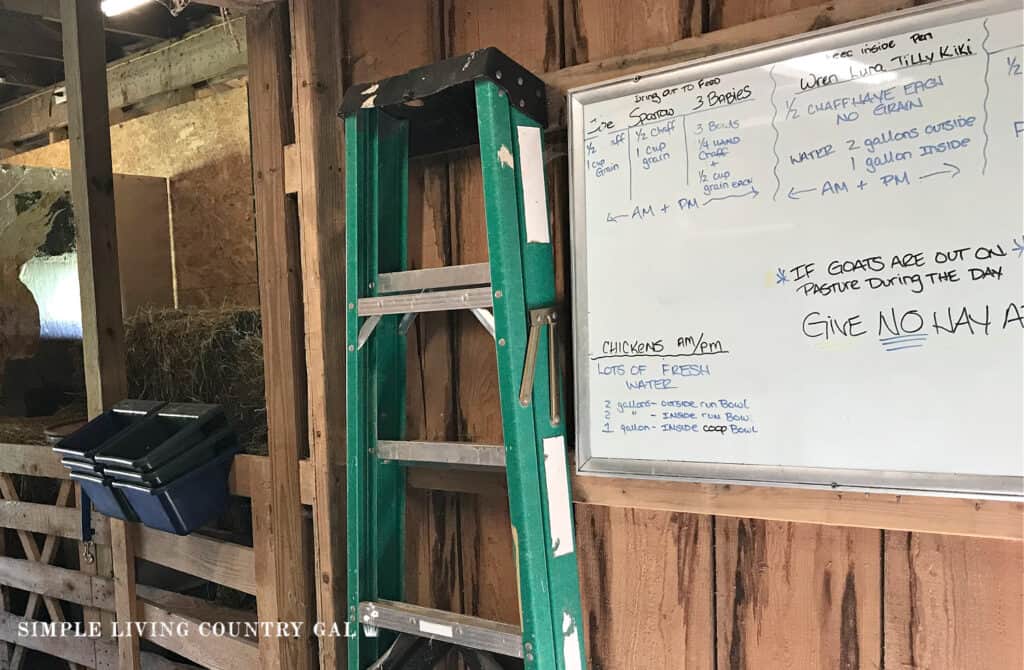
Having durable and secure storage in place will help to keep your animals healthy. By always supplying them with fresh feed you will encourage a strong and healthy herd. Not only that but keeping your feed dry and free of pests will save you money.
Livestock feed can be incredibly inexpensive so investing in ways to allow it to last while keeping its quality is a good way to invest your time and money. The good news is that once you find a method that works for you you can relax knowing you have this part of your homestead streamlined.
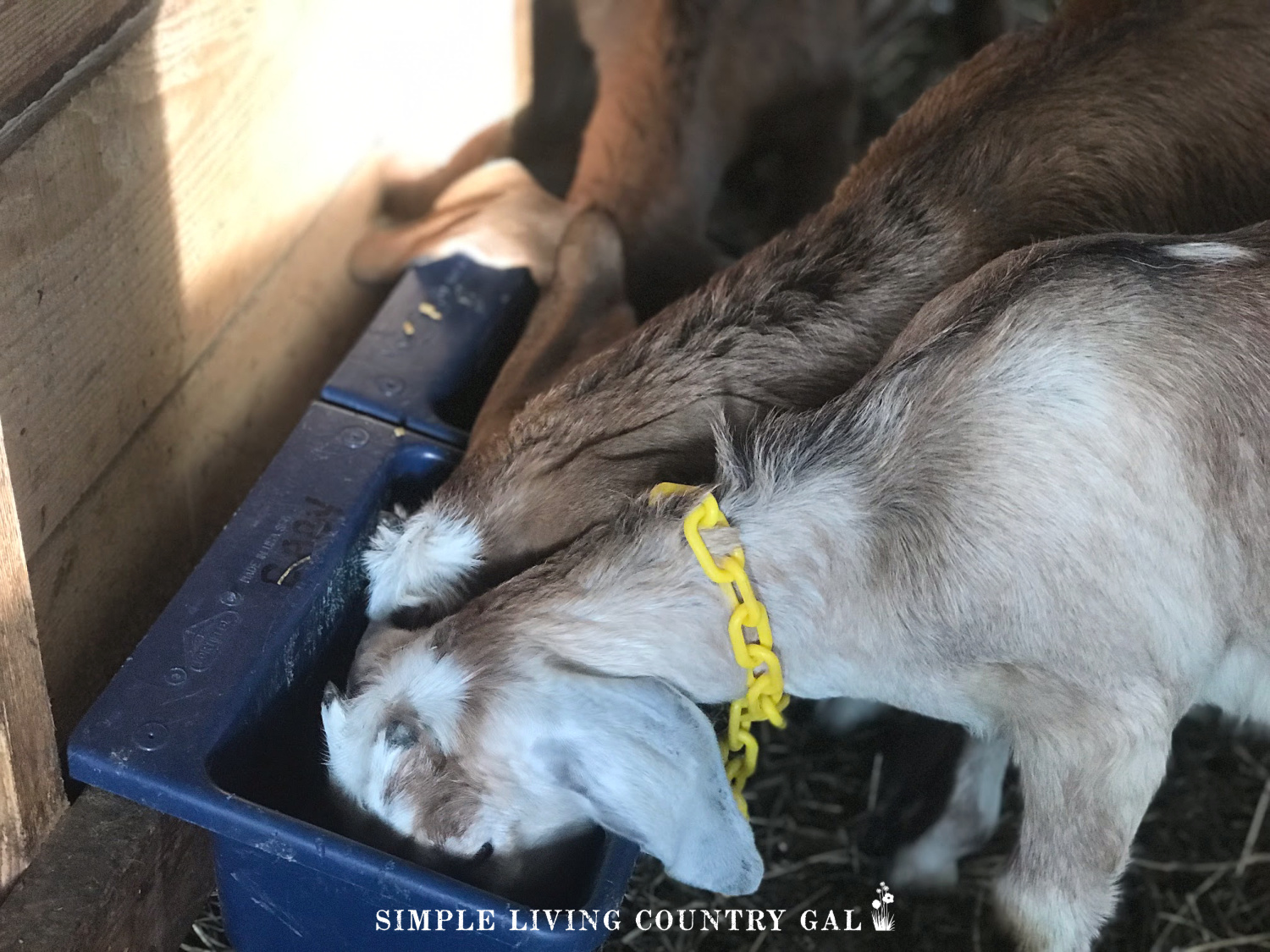
I hope this list helps you to find an option for your own feed storage that will work best for you so you can create a money-saving not to mention nicely organized, feed room that you enjoy to be in.
Even if you have just a few chickens, a single pet or an entire homesteading zoo like we do having a secure way to store your animal's food with livestock feed storage containers is not only good for the quality of the food but economical for you as well.
Find this and more at the Homestead BlogHop!
Source: https://simplelivingcountrygal.com/livestock-feed-storage-containers/

0 Response to "What to Store Feed in Thats Waterproof"
ارسال یک نظر